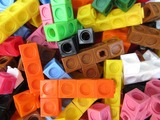
Students use various representations to compare fractions.
- Subject:
- Mathematics
- Material Type:
- Lesson Plan
- Author:
- Drew Polly
- Date Added:
- 07/12/2020

Students use various representations to compare fractions.

Examples of Anchor Charts for Grade 3 Fractions
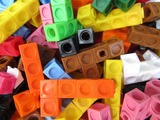
Students use various representations to compare fractions with the same denominators.
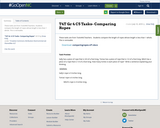
These Tasks are from Tools4NCTeachers. Students compare the length of ropes whose length is less than 1 whole. This is remixable.
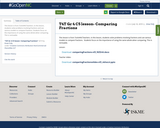
This lesson is from Tools4NCTeachers. In this lesson, students solve problems involving fractions and use various models to compare fractions. Students focus on the importance of using the same whole when comparing. This is remixable.
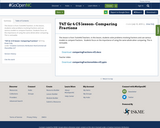
This lesson is from Tools4NCTeachers. In this lesson, students solve problems involving fractions and use various models to compare fractions. Students focus on the importance of using the same whole when comparing. This is remixable.
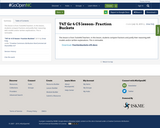
This lesson is from Tools4NCTeachers. In this lesson, students compare fractions and justify their reasoning with models and/or written explanations. This is remixable.
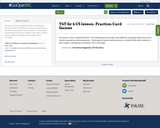
This lesson is from Tools4NCTeachers. The following lesson provides three different card games that focus on the fraction equivalence and comparisons. These games may be used to practice or reinforce skills within stations or with a large or small group of students. This is remixable.
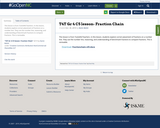
This lesson is from Tools4NCTeachers. In this lesson, students explore correct placement of fractions on a number line. They use the number line, reasoning, and understanding of benchmark fractions to compare fractions. This is remixable.
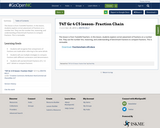
This lesson is from Tools4NCTeachers. In this lesson, students explore correct placement of fractions on a number line. They use the number line, reasoning, and understanding of benchmark fractions to compare fractions. This is remixable.
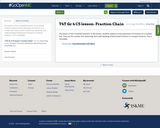
This lesson is from Tools4NCTeachers. In this lesson, students explore correct placement of fractions on a number line. They use the number line, reasoning, and understanding of benchmark fractions to compare fractions. This is remixable.

This lesson is from Tools4NCTeachers. In this lesson, students solve fraction tangram puzzles and compare the fractional size of regions to other regions. Connections are made to other area models of fractions. This is remixable.
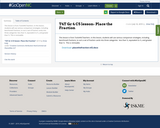
This lesson is from Tools4NCTeachers. In this lesson, students will use various comparison strategies, including benchmark fractions, to sort a set of fraction cards into three categories: less than _, equivalent to _, and greater than _. This is remixable.

This lesson is from Tools4NCTeachers. In this lesson, students solve Who Am I? puzzles that require them to compare fractions and apply understanding of equivalent fractions and benchmark fractions. This is remixable.

This task is from Tools4NCTeachers. Students compare fractions to determine if they have more or less than 3/4 of a Liter. This task assesses comparing fractions rather than metric measurement. The problem is set in the context of metric measurement; however, students do not need knowledge of metric benchmarks or conversions in order to solve this problem. This is remixable.
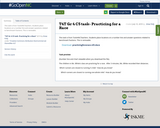
This task is from Tools4NCTeachers. Students place locations on a number line and answer questions related to benchmark fractions. This is remixable.

This task is from Tools4NCTeachers. Students explore a 3-part task focused on comparing fractions and determining if the wholes are equal. This is remixable.

This task is from Tools4NCTeachers. Students use pattern blocks to compare fractions. This is remixable.
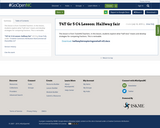
This lesson is from Tools4NCTeachers. In this lesson, students explore what “half-ness” means and develop strategies for comparing fractions. This is remixable.

Tasks for comparing fractions (3.NF.4).